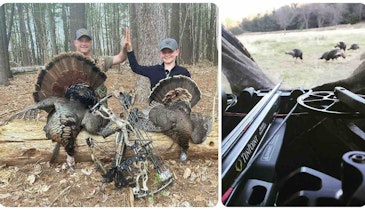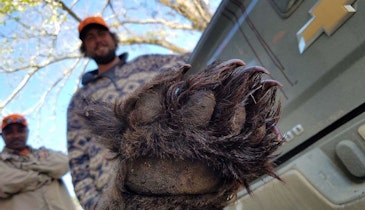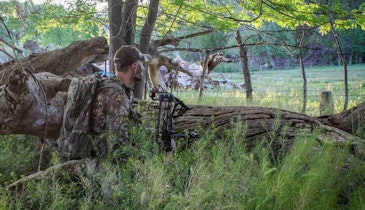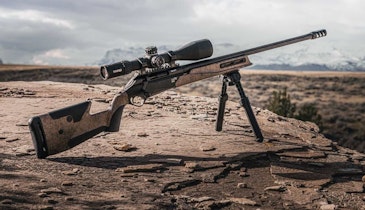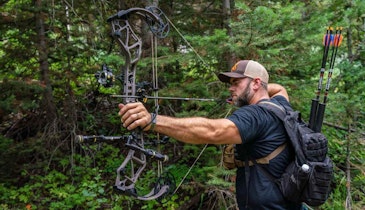1. Drawing Too Early
This is hands down one of the most common mistakes made in the turkey woods with a stick and string. How do I know? Well, because I have done it a lot. It certainly is easy to see how it happens, right? Your anticipation is high. You hear a bird screaming his head off as he gets closer. You know he’s in range, you see his white head and you rip that string back. Instead of running into your decoys and posing for you, he hangs up. Now what?
Planning your draw, whether you’re in a blind or doing it the hard way in the open, can be the factor that your entire hunt hinges on. It’s easy to get excited and draw at the first sign of that longbeard, but don’t let the excitement cloud your judgment. Watching his body language is critical. If he is in full strut, wait for the back of his fan to face you, it’s likely blocking his view behind him. Listen to him; if he’s drumming or gobbling, he most likely has no idea you’re in his space, so there’s no rush. If you see that he’s coming, let him come. Don’t draw when he’s at 50 yards hoping he will stroll right into 10, plan your draw carefully.
2. Calling Yourself Right Out of the Game
Turkeys are birds of communication. Wow, thanks Captain Obvious — no secret there. When a longbeard gobbles, he’s trying to locate the hen he hears, meaning you, and get “her” to come to him. Too often we start wailing away on calls thinking that because he’s gobbling, he’s coming. Sometimes this is the case and it all comes together, but what can happen is he hangs up in one spot and gobbles at you expecting you to come to him because you are so vocal. He’s thinking you are just as excited as he is.
If you find a bird that isn’t completely fired up, play “hard to get.” Calling more sparingly can give a longbeard the idea that the hen he hears is uninterested. Some patience and the right kind of persistence can push him over the edge. He might close the distance needed to get into your effective range.
3. Aiming at the Wrong Spot
A strutting turkey is one of nature’s most beautiful sights, but it can wreak havoc on a bowhunter. All too often we aim thinking “how could we miss?” Then we see feathers fly, followed by the gobbler running off completely unharmed.
Understanding the slight consistencies, in or out of strut, in the body and the bird’s anatomy can help you place that arrow in the boiler room. If a gobbler is close enough and you feel confident, aiming from the beard up on a tom is arguably the most lethal shot. This is a high-risk, high-reward spine shot, though. A little off the mark in any direction and you’re watching him hightail it for the next county. A turkey’s heart/lung area is relatively close to the area surrounding the wing joint. If you study images of turkeys, you’ll see an identifiable line where the wing connects to the body. This is your “X” and hitting this mark will likely achieve two outcomes: it breaks the wing bone preventing the bird from flying, and it will get into the vitals resulting in a quick, clean kill.

